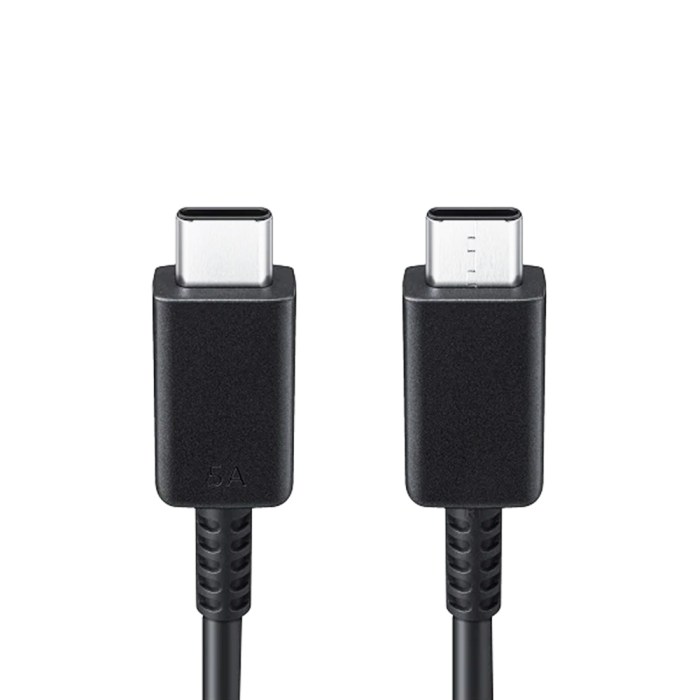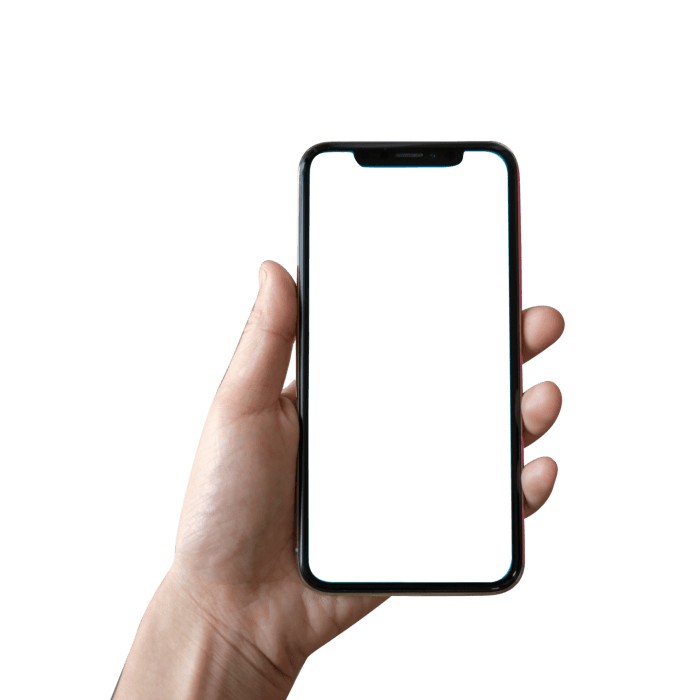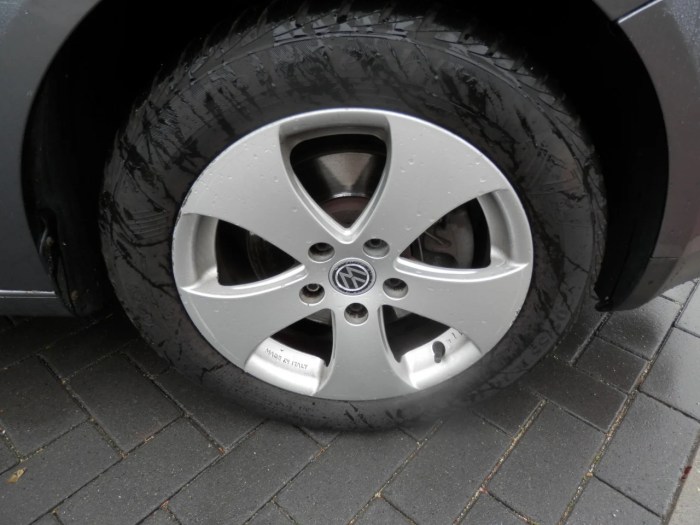Mobile Device Insurance Plans Essential Coverage Guide
Mobile Device Insurance Plans serve as a crucial safety net for your tech investments, ensuring that unexpected mishaps won’t break the bank. In an age where smartphones and tablets are lifelines to communication, work, and entertainment, having the right insurance can make all the difference in keeping your devices protected against damages.
These insurance plans cover various types of damages, from accidental drops to theft, providing peace of mind to consumers. Understanding both the differences between insurance and warranties, as well as the numerous benefits offered by these plans, can empower you to make informed decisions while safeguarding your devices.
Understanding Mobile Device Insurance Plans
Mobile device insurance plans provide a safety net for smartphone and tablet owners, protecting them from unexpected financial burdens due to damages, theft, or loss. The increasing reliance on mobile devices has made it essential for users to safeguard their investments, making insurance plans a valuable consideration for many. These plans can vary widely in coverage, costs, and terms, offering users various options tailored to fit their needs and preferences.Mobile device insurance typically covers a range of potential damages that can occur to a device.
Coverage can include incidents such as accidental drops, liquid damage, theft, and even mechanical failures. Users should carefully review the specifics of their plan, as different insurers may have varying definitions of what constitutes a covered incident. Here are some common types of damages covered under these insurance plans:
Types of Damages Covered
Understanding what damages are covered by mobile device insurance is crucial for users to make informed decisions. Generally, the types of damages can include:
- Accidental Damage: This includes screen cracks, dents, or any physical damage caused by unintentional accidents.
- Theft: Insurance often covers the loss of the device if it is stolen, reducing the financial impact on the owner.
- Liquid Damage: Exposure to water or other liquids can lead to significant damage, and many plans will cover repairs or replacement.
- Mechanical Failure: Some insurance policies cover issues that arise not from user error but from normal wear and tear or factory defects.
Mobile device insurance should not be confused with warranties, which often have more limited coverage. While warranties generally cover manufacturing defects and provide service for a limited time, mobile device insurance plans are more comprehensive and can protect against a wider range of incidents.
Differences Between Mobile Device Insurance and Warranties
It is important to differentiate between mobile device insurance and warranties to understand the best option for device protection. The main differences include:
- Scope of Coverage: Insurance typically covers a broader range of incidents including theft and accidental damage, while warranties often only cover manufacturing defects.
- Duration of Coverage: Warranties usually have a fixed period after purchase, while insurance plans can be renewed annually or monthly.
- Claim Process: Insurers may require a deductible for claims, while warranties might provide free service without deductibles for defects.
“Mobile device insurance provides peace of mind by safeguarding against unforeseen incidents, while warranties serve as a safeguard for manufacturing quality.”
With the rise of mobile device usage and their accompanying costs, investing in a mobile device insurance plan can offer essential protection against the unpredictable nature of everyday life.
Benefits of Mobile Device Insurance Plans

Source: mkmobile.ca
Mobile device insurance plans offer a safety net for consumers who rely heavily on their smartphones and tablets. With the increasing cost of mobile devices, having insurance can save users from unexpected financial burdens that arise from damage or loss. Understanding the benefits of these plans can help consumers make informed decisions about safeguarding their valuable devices.One of the primary advantages of mobile device insurance is financial protection.
Accidental damages can lead to repair costs that are often substantial, sometimes even exceeding the device’s value. For instance, a cracked screen repair can range from $100 to $300, depending on the device. Furthermore, if a device is lost or stolen, replacing it outright can cost hundreds of dollars. Insurance plans mitigate these financial risks and provide peace of mind.
Key Benefits of Mobile Device Insurance
Mobile device insurance plans come with various benefits that cater to different consumer needs. Understanding these benefits helps consumers decide the best plan for their situation.
- Accidental Damage Coverage: Most plans cover accidental damages such as cracked screens, liquid spills, or any unintentional mishaps that may occur during daily use. This means that users can get their devices repaired or replaced without incurring heavy costs.
- Theft Protection: Insurance plans often protect against theft, which is a growing concern as mobile devices become more valuable. This means that if a device is stolen, users can file a claim to receive a replacement device.
- Loss Coverage: In addition to theft, many plans offer coverage for lost devices, providing another layer of financial safety. This is particularly beneficial for individuals who frequently misplace their devices or for those who travel often.
- Convenience of Claims: Most insurance providers offer user-friendly claims processes that can be completed online or through an app. This ease of use ensures that consumers can get their devices repaired or replaced without hassle.
- Potential Discounts on Premiums: Some insurance providers offer discounts for bundling multiple devices or for maintaining a good claims history, allowing consumers to save money over time.
Real-Life Scenarios Illustrating the Need for Insurance
The necessity of mobile device insurance becomes evident in everyday situations where devices encounter unforeseen issues.
- Imagine a scenario where a person accidentally drops their phone while biking. Without insurance, they face a significant bill for repairs, whereas an insurance claim could cover most, if not all, of the costs.
- Consider a traveler who loses their phone while on vacation. The cost of replacing a lost phone can be daunting, but if insured, they can quickly obtain a replacement at minimal out-of-pocket expense.
- A parent whose child spills juice on their tablet can face costly repairs. With insurance, they can have it repaired or replaced with little financial strain.
Financial Implications of Not Having Insurance
The absence of mobile device insurance can lead to severe financial implications for consumers.
- Repair costs can often exceed the initial purchase price of the device, especially for high-end models. For example, replacing a flagship smartphone may cost upwards of $1,000 if it is lost or damaged beyond repair.
- Consumers may have to forgo necessary repairs to save money, leading to prolonged usage of malfunctioning devices, which can impact productivity and daily life.
- The emotional stress of dealing with a lost or damaged device can be compounded by the financial strain of replacing it without insurance. The peace of mind that comes with coverage can significantly reduce this stress.
Choosing the Right Mobile Device Insurance Plan
Selecting an appropriate mobile device insurance plan can be a daunting task, given the variety of options available in the market. Understanding your personal needs and evaluating these offerings carefully is essential to ensuring you make a well-informed decision. This guide will help you navigate the key factors and compare different providers to aid in your selection process.When evaluating mobile device insurance coverage, it’s important to consider several critical factors that can significantly impact your choice.
The landscape of mobile device insurance is vast, with different companies offering various levels of coverage, deductibles, and premium rates. Here’s what you should keep in mind:
Factors to Consider When Evaluating Coverage
Understanding the following factors can help consumers make more informed decisions:
1. Coverage Options
Review what types of damages and losses are covered. Some plans offer coverage for theft, accidental damage, loss, and mechanical failure, while others may have more limited options.
2. Deductibles
Check the deductible amount you would need to pay when filing a claim. A lower premium might come with a higher deductible, which could affect your out-of-pocket expenses during a claim.
3. Claim Process
Investigate how easy it is to file a claim. Some providers have a streamlined online process, while others may require phone calls and paperwork, which can be time-consuming.
4. Provider Reputation
Research the customer service reputation of each provider. Online reviews and ratings can give a clear picture of previous customers’ experiences.
5. Premium Costs
Compare the monthly premiums and see how they stack up against the coverage offered. Make sure the cost is justified by the benefits provided.
6. Additional Benefits
Some insurance plans may offer additional perks such as overseas coverage, device replacement, or even tech support. Evaluate whether these extras are worth the additional cost.
7. Cancellation Policy
Look into how easy it is to cancel the insurance if you choose to do so later on. Some companies may have specific terms that could impact your decision.
8. Renewal Terms
Understand the renewal process and any potential changes in the premium or coverage terms when the policy is up for renewal.By keeping these factors in mind, consumers can make a more informed decision focused on their specific needs. Comparing different providers can also shed light on the best options available.
Comparing Different Insurance Providers
When it comes to mobile device insurance, several leading providers stand out due to their reputation and offerings. Understanding their distinct features can help consumers navigate their options effectively. Consider the following key players:
Asurion
Known for comprehensive coverage options including accidental damage, theft, and loss. They have a user-friendly claims process and provide quick device replacements.
SquareTrade
Offers a range of plans with flexible deductibles and additional benefits like 24/7 customer support. Their policies often include protection for mechanical failures.
AppleCare+
Specifically for Apple devices, this plan provides excellent coverage for accidental damage and includes support directly from Apple’s customer service.
Verizon Mobile Protect
This service not only covers device damage and theft but also offers features such as tech support and security software.Each of these providers has unique offerings, so it’s beneficial to compare their coverage, deductibles, and customer service ratings to find the best fit for your needs.
“Choosing the right mobile device insurance plan is ultimately about aligning your personal needs with the best coverage options available.”
The Claims Process for Mobile Device Insurance

Source: vecteezy.com
Filing a claim for mobile device insurance may seem daunting at first, but understanding the process can simplify things significantly. Knowing the steps involved, as well as common challenges and tips for a successful claim submission, can help ensure that your experience is as smooth as possible. Here’s a breakdown of what you need to know.
Steps Involved in Filing a Claim
The claims process generally involves several key steps, and being aware of each can help you navigate through it efficiently.
- Review Your Policy: Start by reviewing your insurance policy for coverage details, limits, and any specific requirements for filing a claim.
- Gather Documentation: Collect necessary documentation such as your policy number, proof of purchase, and any evidence of damage or loss, like photos or police reports if applicable.
- Contact Your Insurer: Reach out to your insurance provider through their designated claims hotline or website to initiate the claim process.
- Complete Claim Form: Fill out the claim form provided by your insurer, ensuring all information is accurate and complete.
- Submit Documentation: Send your gathered documentation along with the completed claim form to your insurance provider, either online or via email.
- Follow Up: After submission, follow up with your insurer to confirm receipt of your claim and to check on any further requirements or timelines.
Common Challenges During the Claims Process
Individuals often encounter various challenges while navigating the claims process, which can lead to frustration and delays. Understanding these common issues can help you prepare.
“Many claims are denied due to incomplete documentation or lack of coverage awareness.”
Some typical challenges include:
- Incomplete or incorrect claim forms leading to delays.
- Lack of understanding regarding what is covered under the policy.
- Time-consuming follow-ups with insurers due to slow processing times.
- Difficulty in obtaining necessary documentation, especially for theft claims.
- Miscommunication between the insured and the insurer regarding coverage limits.
Tips for Ensuring a Smooth Claim Submission
To enhance your chances of a successful claim submission, consider the following tips. These strategies can help streamline the process and reduce potential headaches.
“Being proactive and organized can significantly impact your claim experience.”
Stay Organized
Keep all relevant documents, including your policy, receipts, and correspondence, in one place for easy access.
Document Everything
Take detailed notes of conversations with your insurer, including the names of representatives and dates of discussions.
Be Honest and Accurate
Provide truthful and accurate information when filling out your claim form to avoid complications.
File Promptly
Submit your claim as soon as possible to adhere to any time limits set by your insurance provider.
Utilize Online Tools
Many insurers offer online claim tracking systems; use these tools to monitor your claim’s progress.By preparing thoroughly and adhering to these suggested steps and tips, the claims process for mobile device insurance can be navigated more easily, allowing you to focus on getting your device replaced or repaired without excessive stress.
Costs Associated with Mobile Device Insurance Plans
Mobile device insurance plans come with various costs that can affect your overall budget. Understanding these costs is crucial to making an informed decision about whether to invest in a policy for your device. This section dives into the typical expenses involved, how premium rates are calculated, and provides examples to help illustrate cost differences between coverage options.
Typical Costs of Mobile Device Insurance
Acquiring mobile device insurance typically involves several costs that can vary based on the provider and the level of coverage. The primary costs include premiums, deductibles, and sometimes additional fees for specific services.
- Premiums: This is the regular payment made to maintain the insurance policy. Premium rates can vary based on the type of device, the coverage level, and the insurance provider. For instance, premiums for a flagship smartphone can range from $10 to $20 per month.
- Deductibles: In the event of a claim, the deductible is the amount you must pay out of pocket before the insurance coverage kicks in. Depending on the plan, deductibles can range from $50 to $300. Higher deductibles typically result in lower monthly premiums.
- Additional Fees: Some plans may also include fees for services like repairs or replacements that are not covered under typical policies. There may also be administrative fees associated with filing claims.
Factors Influencing Premium Rates, Mobile Device Insurance Plans
Insurance providers determine premium rates based on a variety of factors that assess the risk associated with insuring your mobile device. These factors include:
- Device Value: Higher-value devices often carry higher premiums due to the increased risk and cost associated with repair or replacement.
- User Claims History: If you have a history of frequent claims, your premiums may increase as the provider assesses you as a higher risk.
- Coverage Type: Comprehensive plans that cover accidental damage, theft, and loss tend to have higher premiums than basic plans that cover only specific types of damage.
Cost Comparisons Between Coverage Options
To better understand the costs associated with different mobile device insurance options, consider the following comparisons for a mid-range smartphone valued at $700.
| Coverage Option | Monthly Premium | Deductible | Annual Cost |
|---|---|---|---|
| Basic Coverage | $10 | $150 | $120 |
| Comprehensive Coverage | $15 | $100 | $180 |
| Premium Coverage | $20 | $50 | $240 |
“Choosing the right mobile device insurance plan often comes down to balancing monthly premiums against deductibles and coverage options.”
This breakdown allows potential policyholders to assess which plan aligns best with their needs and budget. A detailed comparison gives insight into not just the monthly costs, but also the financial implications in the event of a claim.
Trends in Mobile Device Insurance
The landscape of mobile device insurance is evolving rapidly, influenced by technological advancements and changing consumer preferences. As smartphones and other devices become integral to daily life, understanding the trends shaping mobile device insurance is essential. This overview will highlight recent developments, the impact of emerging technologies, and shifting consumer behavior in the realm of mobile insurance.
Emerging Technologies and Insurance Offerings
The integration of new technologies is reshaping mobile device insurance plans, leading to more comprehensive and user-friendly offerings. For instance, the rise of IoT (Internet of Things) devices is prompting insurers to expand coverage beyond traditional smartphones to include smartwatches, tablets, and home devices.
- Artificial Intelligence (AI) is being utilized to streamline the claims process, enabling quicker response times and improved customer service. For example, some companies are leveraging AI chatbots to assist customers with claims inquiries, reducing wait times and enhancing customer experience.
- Blockchain technology is gaining traction in the insurance industry, providing transparency and security in policy management and claims processing. This technology can eliminate fraud, ensuring that claims are processed fairly and efficiently.
- Telematics is also becoming more relevant, especially for devices that can track usage and provide data that insurers can use to customize coverage based on user behavior.
Consumer Behavior Trends
Understanding consumer behavior is pivotal in shaping mobile device insurance offerings. Recent trends indicate that consumers are becoming increasingly aware of the importance of protecting their devices, leading to a rise in policy adoption.
- Many consumers now prioritize comprehensive coverage that includes accidental damage, theft, and loss. This is reflected in the shift towards plans that offer all-in-one protection rather than basic coverage.
- There is also a growing trend towards flexibility in insurance plans. Consumers prefer options that allow them to adjust their coverage as needed, such as temporary coverage for travel or increased protection during high-risk periods.
- Digital engagement is becoming essential, with more users opting for mobile apps that facilitate policy management, claims submission, and customer support. This shift towards app-based services highlights a desire for convenience and accessibility.
“The trend toward more flexible and comprehensive coverage options allows consumers to tailor policies to their unique needs, enhancing satisfaction and loyalty.”
As mobile devices continue to evolve, the insurance industry must stay agile, adapting to these trends while ensuring that policyholders receive the best protection and service possible. Keeping pace with these changes will be crucial for insurers looking to attract and retain customers in an increasingly competitive market.
Future of Mobile Device Insurance Plans

Source: pixabay.com
The future of mobile device insurance plans is shaping up to be an exciting landscape filled with advancements and shifts that could significantly enhance the way consumers protect their devices. As technology evolves, so too does the need for insurance products that can meet the changing demands of users. With the rapid pace of digital transformation, understanding the trajectory of mobile device insurance is crucial for both providers and consumers.Potential advancements in mobile device insurance include greater customization and integration of technology in the claims process.
Insurers are likely to leverage artificial intelligence and machine learning to streamline claims processing, making it faster and more efficient. For instance, using AI chatbots can help customers file claims around the clock, while data analytics can personalize coverage options based on individual usage patterns and device history.
Market Changes Impacting Future Insurance Plans
Market dynamics are continuously evolving, and these changes are expected to influence the future of mobile device insurance in several ways. Consumer behavior, technological advancements, and regulatory shifts all play a significant role in shaping these products.
- The rise of 5G technology is likely to boost the demand for insurance plans as consumers invest in higher-priced devices that may require specialized coverage.
- Increased awareness of cybersecurity risks may lead to insurance products that also cover data breaches and identity theft, making policies more comprehensive.
- The growing trend of subscription services may lead insurers to offer flexible, on-demand insurance products that align more closely with consumer needs.
Areas for Innovation in Mobile Device Insurance Services
There are numerous areas ripe for innovation within mobile device insurance services that can enhance customer experience and provide better coverage options. Improving customer engagement through mobile applications is one area where insurers can innovate. These apps could provide policyholders real-time updates on claims, policy changes, and coverage options. Additionally, gamification elements within these apps could incentivize users to take better care of their devices, potentially lowering claim rates.Another area is the integration of IoT devices with mobile insurance plans.
As smart devices become ubiquitous, insurance products could extend coverage to a wider range of connected devices, providing holistic protection for consumers. Moreover, collaborating with manufacturers can lead to bundled products that offer both device purchase and insurance in a single package, simplifying the purchasing process for consumers and ensuring they are covered from day one.In summary, the future of mobile device insurance plans is poised for significant transformation, driven by technological advancements, market changes, and innovative approaches to service delivery.
Conclusive Thoughts
In summary, Mobile Device Insurance Plans represent a smart investment in today’s digital world, offering extensive protection and financial relief when you need it most. Whether you’re selecting the right plan or navigating the claims process, being informed helps ensure you maximize your coverage and enjoy your devices without worry.
Commonly Asked Questions
What does mobile device insurance typically cover?
Mobile device insurance usually covers accidental damage, theft, and sometimes loss, depending on the policy.
How much does mobile device insurance cost?
The cost of mobile device insurance varies widely but generally ranges from $5 to $15 per month, depending on the device and coverage options selected.
Is mobile device insurance worth it?
Yes, especially if you frequently upgrade or use your device for essential tasks. It can save you significant repair or replacement costs.
Can I buy mobile device insurance after purchasing my phone?
Many providers allow you to purchase insurance within a specific time frame after acquiring your device, typically 30 days.
How fast can I file a claim for my mobile device?
Most insurers allow you to file a claim as soon as the incident occurs, often through their websites or apps, but processing times can vary.





